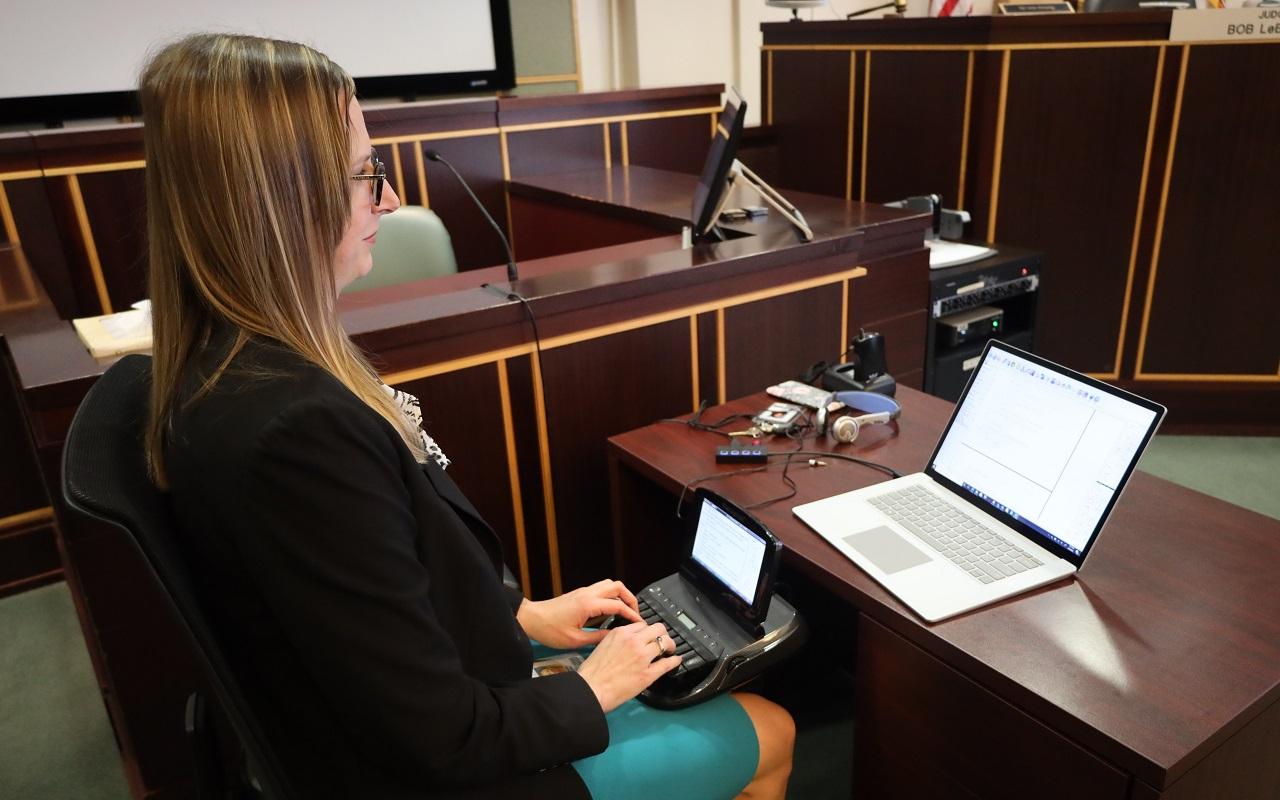Everything About Court Coverage: Essential Insights for Legal Professionals
Court reporting works as a critical element of the legal system, ensuring that process are accurately recorded. As modern technology breakthroughs, the functions and tools of court press reporters are developing. This transformation asks for lawyers to adapt to brand-new methods and technologies. Understanding the ins and outs of court reporting can substantially impact instance end results. What important understandings should attorneys realize to browse this changing landscape efficiently?
The Function of Court Reporters in Legal Process
Stenotype reporter offer as the critical voice of the courtroom, recording every talked word during legal proceedings with accuracy and precision. They record testaments, lawful arguments, and judges' rulings, guaranteeing that a complete record is preserved. This paperwork is vital for charms, providing a clear account of what taken place throughout hearings and tests. Stenotype reporter have to have remarkable paying attention abilities and a thorough understanding of lawful terminology to assist in precise reporting. They usually work under stress, needing focus and rate to equal the dialogue. Their transcripts function as official records, which can be referenced long after the procedures end. Along with their transcription duties, stenotype reporter might additionally offer real-time coverage, enabling courts and attorneys instant access to the spoken word. In general, their duty is essential in promoting the integrity and transparency of the judicial procedure, contributing notably to the lawful career.

Innovation Transforming Court Reporting
As technology developments, the landscape of court coverage is undergoing a significant change, enhancing the performance and accuracy of legal documentation. Digital devices such as real-time transcription software application make it possible for stenotype reporter to deliver prompt message output throughout proceedings, enabling attorneys to access details immediately. Moreover, remote reporting capacities have emerged, facilitating involvement from numerous areas with protected video clip conferencing platforms.
Expert system is additionally making strides, with algorithms qualified of aiding in transcription procedures and ensuring greater precision in capturing spoken dialogue. On top of that, cloud storage options offer protected access to case documents, simplifying cooperation between lawyers and stenotype reporter.

These technological advancements not only enhance process yet additionally lower the capacity for human error, ultimately adding to an extra effective lawful system. The integration of sophisticated innovation right into court coverage is setting new standards for accuracy and efficiency in legal documentation, mirroring the developing needs of the career.
Ideal Practices for Working Together With Court Reporters
Efficient cooperation with stenotype reporter is crucial for assuring exact and prompt legal paperwork. Lawyers need to initiate interaction early, supplying press reporters with relevant instance information, including names, days, and particular terminology. This fundamental information allows press reporters to prepare effectively, reducing the possibility of mistakes.
Furthermore, maintaining open lines of interaction during procedures fosters a productive environment. When necessary, lawful specialists ought to encourage court reporters to seek or ask inquiries clarification. This practice not just improves precision however likewise strengthens the functioning partnership.
Moreover, evaluating transcripts quickly is imperative. Attorneys ought to give positive feedback to press reporters, highlighting any kind of discrepancies or locations for renovation. This collaborative technique aids press reporters improve their warranties and abilities future job Website fulfills the called for requirements.
Respecting due dates and recognizing the press reporters' know-how add to a positive and effective collaboration, eventually profiting the entire lawful process.
Recognizing Different Sorts Of Court Reporting Providers
Various sorts of court coverage solutions provide to various lawful requirements, each offering special advantages and performances (durham court reporting). Typical stenographic coverage is one of the most typical approach, making use of a stenographer who transcribes talked words right into created message during court procedures. This service gives real-time transcripts, enabling prompt accessibility to proceedings
Another choice is electronic reporting, which uses audio recording technology in addition to transcription services. This view publisher site method can be more cost-effective and is valuable for catching extensive sessions where verbatim message is not instantly required.
Furthermore, some services focus on remote or virtual coverage, fitting scenarios where participants can not be literally present.
CART (Interaction Access Realtime Translation) services provide real-time transcription for people with hearing problems, making sure accessibility during lawful process. Each sort of court coverage service plays a vital duty in the lawful process, improving communication and paperwork.
The Future of Court Coverage in the Lawful Sector
While improvements in technology remain to reshape many industries, the future of court reporting in the lawful market is positioned for substantial makeover. durham court reporting. The increasing combination of man-made knowledge and automatic transcription solutions is expected to improve effectiveness and accuracy in court reporting. These tools can simplify the documents procedure, making it possible for attorneys to concentrate on more complex jobs
Remote court coverage has acquired grip, specifically in feedback to the COVID-19 pandemic. Online hearings and depositions are likely to become commonplace, demanding court press reporters to adjust to new technologies and systems.
As the need for real-time coverage and instant accessibility to transcripts grows, stenotype reporter will require to hone their skills in digital proficiency and data monitoring - durham court reporting. The evolving landscape challenges both offers and chances, ultimately redefining the function of court reporters within the lawful market. Embracing these adjustments will be crucial for check my blog maintaining importance and providing top quality service
Regularly Asked Concerns
What Qualifications Do Court Reporters Required to Exercise Skillfully?
Court reporters usually need a secondary school diploma, specialized training in court reporting, and accreditation. Proficiency in stenography or voice writing, in addition to solid language abilities, is essential for accurate transcription in lawful settings.

How Much Do Court Reporting Solutions Commonly Expense?
Court reporting solutions usually cost between $100 to $300 per hour, depending upon elements such as experience, place, and complexity of the case. Extra charges may get transcription and expedited services.
Can Court Reporters Operate In Non-Legal Settings?
Yes, stenotype reporter can operate in non-legal settings, such as shut captioning for tv, transcription solutions for conferences, and creating subtitles for video clips. Their abilities in exact documents are important in numerous industries.
What Is the Average Turn-around Time for Records?
The typical turn-around time for records normally varies from 24 hr to a week, depending upon variables such as the size of the process, complexity, and the stenotype reporter's workload. Timeliness is crucial in legal settings.
Do Court Reporters Provide Providers in Numerous Languages?
Court press reporters can provide solutions in several languages, depending on their qualifications and knowledge. Many are educated to record in numerous languages, improving availability and guaranteeing exact paperwork in varied legal proceedings throughout different etymological backgrounds.
Court press reporters serve as the vital voice of the court room, recording every talked word throughout lawful procedures with accuracy and precision. Court reporters must possess remarkable paying attention abilities and a complete understanding of lawful terminology to facilitate precise coverage. Digital devices such as real-time transcription software enable court reporters to provide immediate text result during procedures, allowing legal specialists to access details instantaneously. Different kinds of court reporting solutions provide to different legal requirements, each offering one-of-a-kind advantages and functionalities. Court press reporters generally require a high institution diploma, specialized training in court reporting, and accreditation.